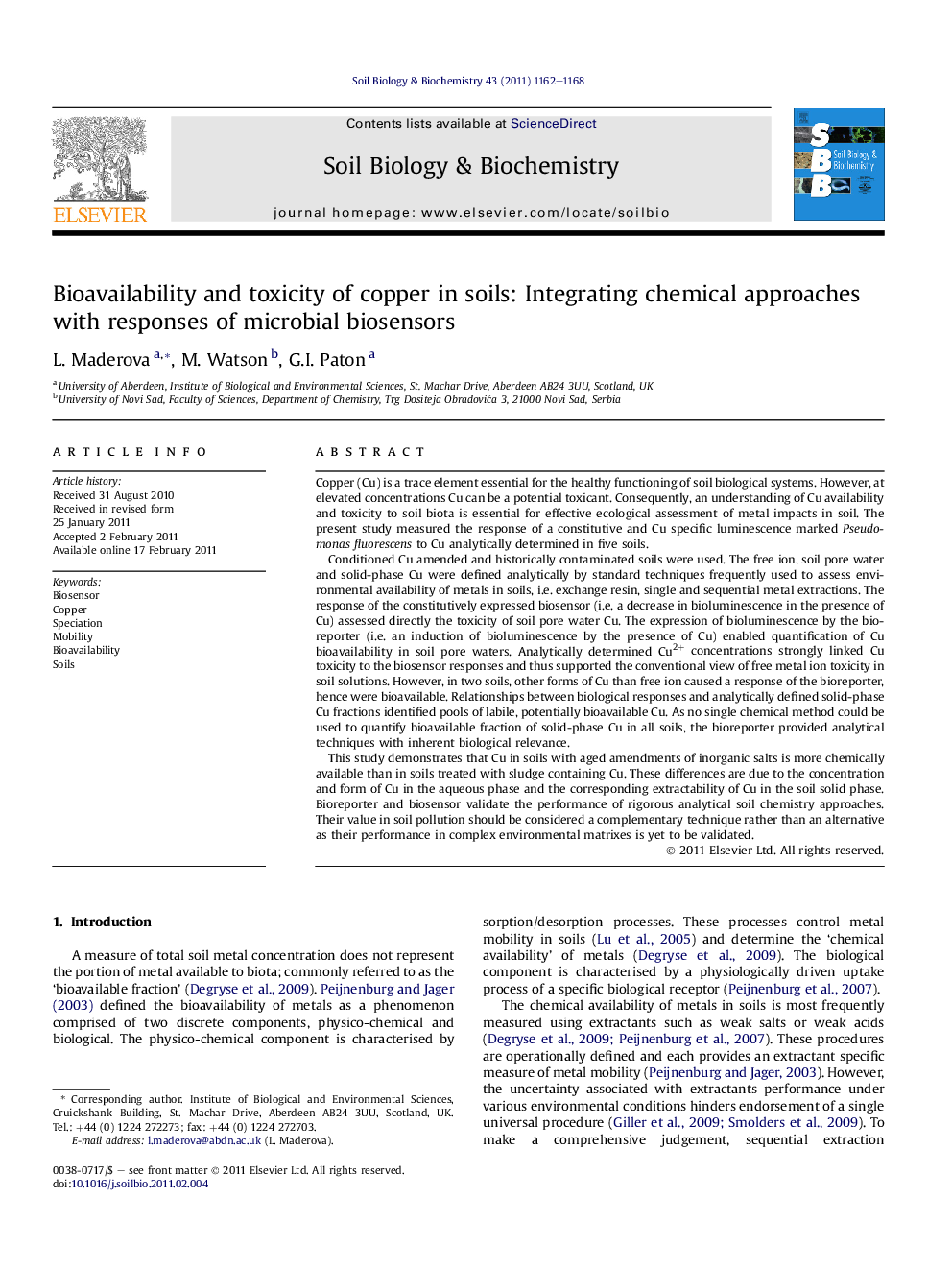| کد مقاله | کد نشریه | سال انتشار | مقاله انگلیسی | نسخه تمام متن |
|---|---|---|---|---|
| 2025292 | 1069991 | 2011 | 7 صفحه PDF | دانلود رایگان |

Copper (Cu) is a trace element essential for the healthy functioning of soil biological systems. However, at elevated concentrations Cu can be a potential toxicant. Consequently, an understanding of Cu availability and toxicity to soil biota is essential for effective ecological assessment of metal impacts in soil. The present study measured the response of a constitutive and Cu specific luminescence marked Pseudomonas fluorescens to Cu analytically determined in five soils.Conditioned Cu amended and historically contaminated soils were used. The free ion, soil pore water and solid-phase Cu were defined analytically by standard techniques frequently used to assess environmental availability of metals in soils, i.e. exchange resin, single and sequential metal extractions. The response of the constitutively expressed biosensor (i.e. a decrease in bioluminescence in the presence of Cu) assessed directly the toxicity of soil pore water Cu. The expression of bioluminescence by the bioreporter (i.e. an induction of bioluminescence by the presence of Cu) enabled quantification of Cu bioavailability in soil pore waters. Analytically determined Cu2+ concentrations strongly linked Cu toxicity to the biosensor responses and thus supported the conventional view of free metal ion toxicity in soil solutions. However, in two soils, other forms of Cu than free ion caused a response of the bioreporter, hence were bioavailable. Relationships between biological responses and analytically defined solid-phase Cu fractions identified pools of labile, potentially bioavailable Cu. As no single chemical method could be used to quantify bioavailable fraction of solid-phase Cu in all soils, the bioreporter provided analytical techniques with inherent biological relevance.This study demonstrates that Cu in soils with aged amendments of inorganic salts is more chemically available than in soils treated with sludge containing Cu. These differences are due to the concentration and form of Cu in the aqueous phase and the corresponding extractability of Cu in the soil solid phase. Bioreporter and biosensor validate the performance of rigorous analytical soil chemistry approaches. Their value in soil pollution should be considered a complementary technique rather than an alternative as their performance in complex environmental matrixes is yet to be validated.
► It is not possible to adopt a single chemical method that would simulate metal bioavailability in soils.
► Biosensor responses to Cu2+ support the conventional view of free metal toxicity in soil solutions.
► Other forms of Cu than Cu2+ cause a response of the bioreporter, hence are bioavailable.
► Biosensors offer a receptor verified approach for study of metal toxicity in soils.
► Bioreporters offer a receptor verified approach for bioavailability study of metals in soils.
Journal: Soil Biology and Biochemistry - Volume 43, Issue 6, June 2011, Pages 1162–1168